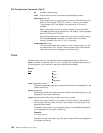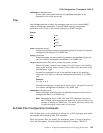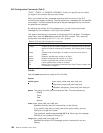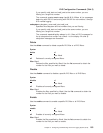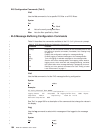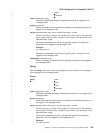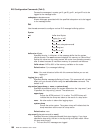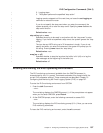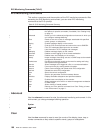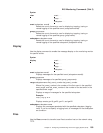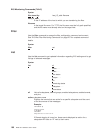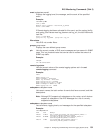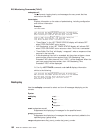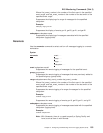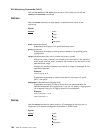
2. Logging stops.
3. The system performs the specified “stop action.”
Logging remains stopped until the next time you issue the set logging on
command or reboot the router.
If you do not specify the stop event when you enter the command, the
system prompts you to enter the stop event. Specifying none disables the
stop event function.
Default value: none
stop string
text
or none
Specifies the string to be used in conjunction with the “stop event” to stop
logging. If you have not specified a stop event, the system ignores the “stop
string.”
Text
can be any ASCII string up to 32 characters in length. If you do not
specify
text
when you enter the command, the system will prompt you for
the string. Entering none clears the “stop string.”
Default value: none
wrap [on or off]
Specifies whether to stop the log when the buffer is full (off) or to log the
new messages at the beginning of the buffer (on).
Default value: off
Entering and Exiting the ELS Operating Environment
The ELS monitoring environment (available from the GWCON process) is
characterized by the ELS> prompt. Commands entered at this prompt modify the
current ELS parameter settings. These commands are described “Chapter 13.
Configuring and Monitoring the Event Logging System (ELS)” on page 167.
To enter the ELS monitoring environment from OPCON:
1. Enter the talk 5 command.
* talk 5
The monitoring displays the GWCON prompt (+). If the prompt does not appear
when you first enter GWCON, press Return.
2. At the GWCON prompt, enter the following command to access ELS:
+ event
The monitoring displays the ELS monitoring prompt (ELS>). Now, you can enter
ELS monitoring commands.
To leave the ELS monitoring environment, enter the exit command.
ELS Configuration Commands (Talk 6)
Chapter 13. Configuring and Monitoring the Event Logging System (ELS) 187
|
|
|
|
|
|
|
|
|
|
|
|
|
|
|
|
|
|
|
|




